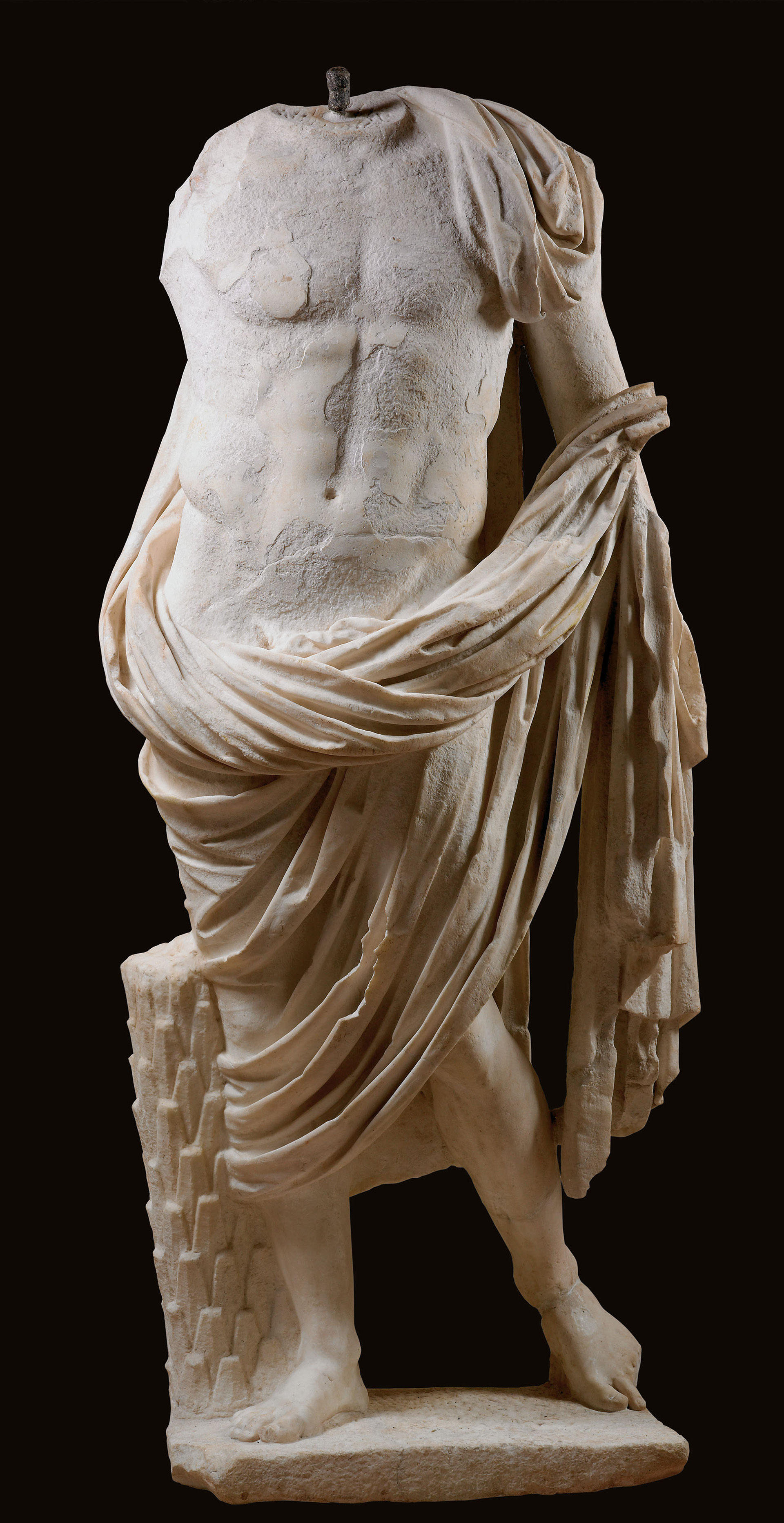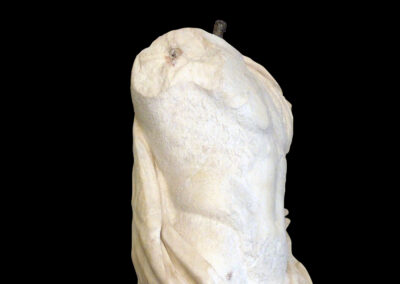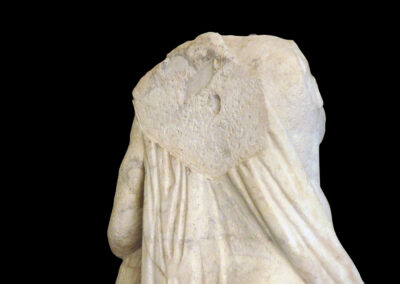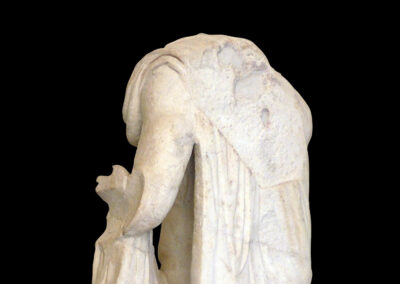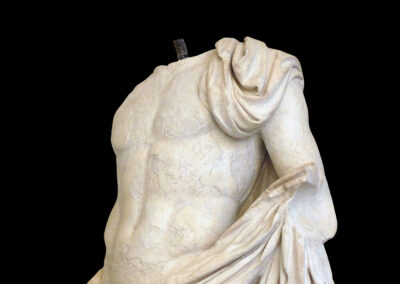A white marble sculpture without veins, identified as Jupiter in the inventory of the House of Pilate of 1751. It is a work from the mid-1st century AD, from the end of the reign of Tiberius or the beginning of the reign of Claudius. The position of the sculpture in "contrapposto" follows the models of movement of classical Greece, of Diomedes of Munich or Polyclitus' Doriphoros: one leg is advanced forwards, bearing the full weight of the body, which requires the added support of a palm tree trunk, while the other is bent, without tension, resting solely on the toes; the position of the hips and shoulders are in turn harmoniously counterposed. The torso and legs are sculpted from a single block of marble. The head and right arm are missing, as well as three toes of the left foot. The fact that he is wearing the paludamentum, a common attribute of imperial representations, suggests that he represents the figure of a deified Roman emperor, probably Augustus, but the absence of the head makes it impossible to say for sure.

